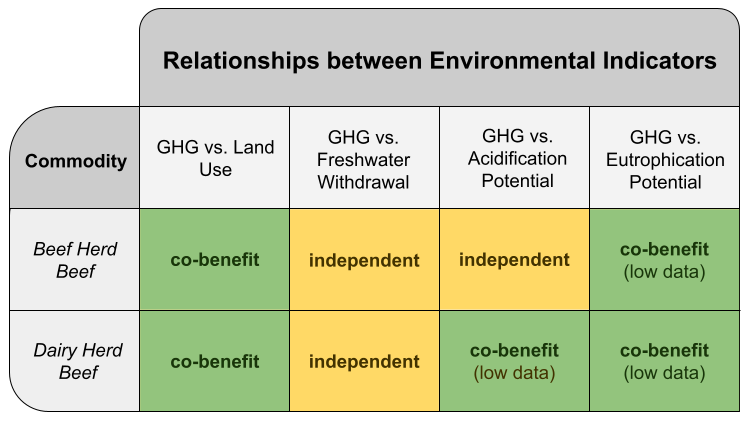
Beef represents 22% of meat production globally, but is also responsible for approximately 37% of all GHG emissions produced by the agricultural sector. This means that it is critical that we find ways to make beef production more efficient in terms of greenhouse gas emissions, without significantly increasing other environmental impacts. In this section, we examine potential trade-offs associated with reducing the GHG emissions of beef production, and identify potential options to reduce GHG emissions produced by the beef industry.
Significantly more GHG emissions are produced per kg of beef in upper-middle income countries, in comparison to high income nations. This disparity based on income level is primarily observed in GHG emissions, but is also reflected in other environmental indicators due to the prevalence of environmental co-benefits in beef production (Table 1). The disparity is primarily caused by the fact that in upper-middle income countries, like Brazil, there is often significantly higher clearing of what was formerly natural land, which releases formerly stored carbon. Another source of this difference is the notably higher rates of enteric fermentation in cattle found in upper-middle income countries, most likely caused by greater reliance on grazing, and poor feed quality.

